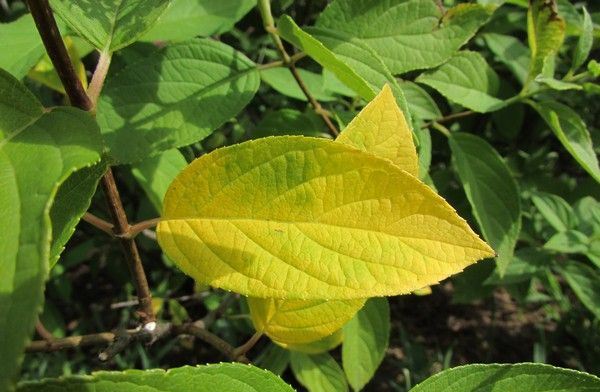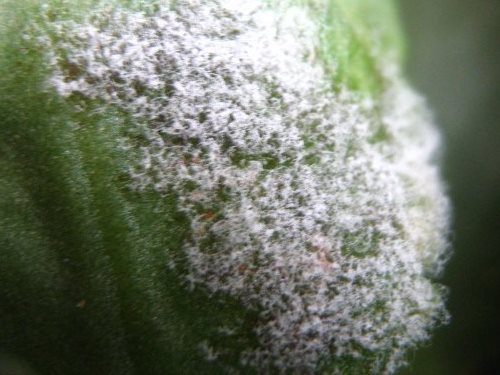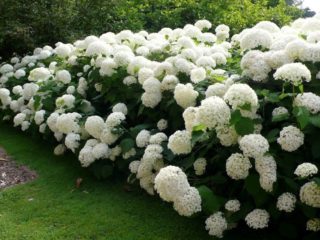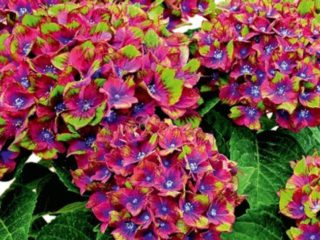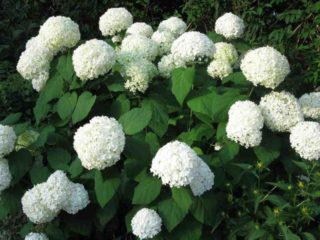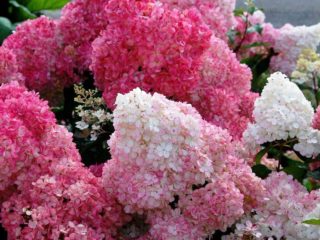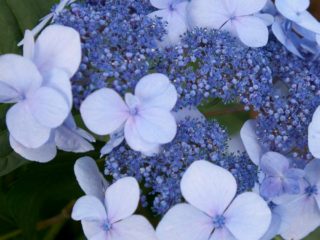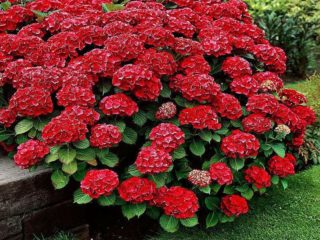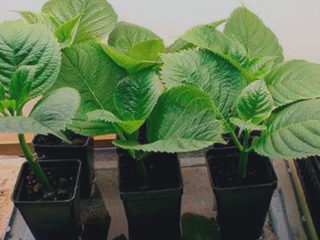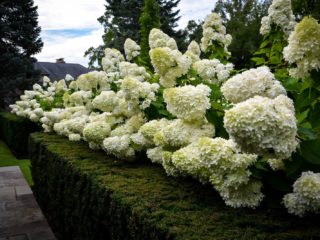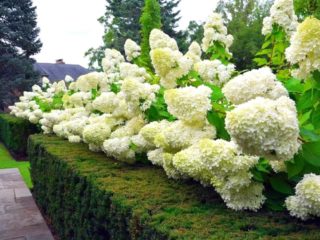Content
Hydrangea Bombshell is an unpretentious perennial shrub, which, among other varieties, is distinguished by abundant, long-lasting flowering and high winter hardiness. Low maintenance requirements and resistance to low temperatures have made this variety very popular; it is ideal for those who do not have time to work in the garden for a long time. Shrubs can be grown in almost all regions of the country.
Description of Bombshell hydrangea
Hydrangea Bombshell (lat. Hydrangeapaniculata bombshell) is a relatively young compact variety of Dutch origin. The shrub reaches a height of 70-90 cm, while the diameter of an adult bush is on average 100-120 cm. The variety is highly branched, but at the same time has a neat spherical shape. The shoots of the bush are quite thin, painted in red-brown tones. The leaves are dark green, large, slightly jagged at the edges. They are shaped like an egg.
The Bombshell variety blooms continuously from July until frost. The flowers are white at first, but as autumn approaches the petals take on a pinkish tint. Their diameter is only 2-3 cm, but the flowers form quite large pyramidal inflorescences - each of them reaches a length of 12-14 cm.
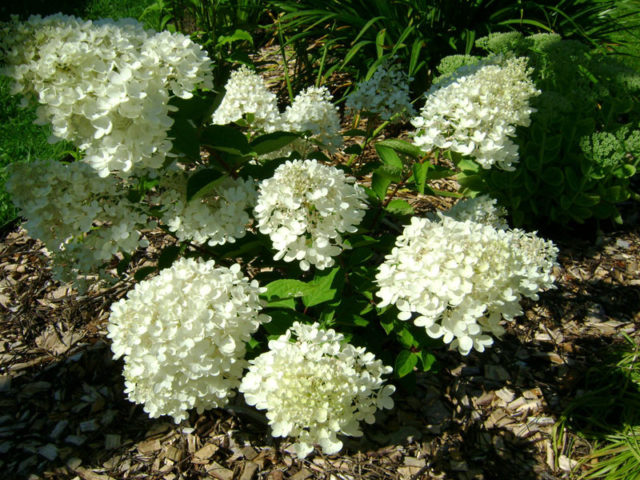
Flowers in inflorescences are arranged quite densely
Hydrangea Bombshell in landscape design
In landscape design, Hydrangea paniculata bombshell is used both in solitary plantings and in group plantings. Most often, the plant is used to create low borders and bush groups. The combination of this hydrangea variety with coniferous crops and trees is considered especially successful. The shrub also looks beautiful together with hostas, mantle and astilbe.
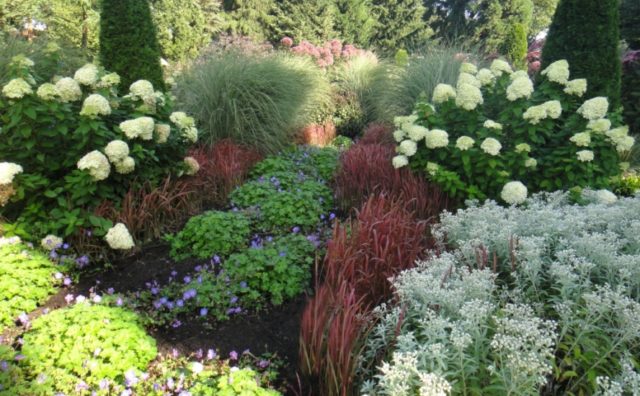
You can plant Bombshell hydrangea together with thuja and Chinese miscanthus, forming a contrasting composition
Winter hardiness of Hydrangea Bombshell
The winter hardiness of Bombshell hydrangea is quite high - the plant can withstand temperatures down to - 34-35 ° C without shelter. However, in particularly harsh winters with little snow, unripe shoots may freeze.
Young seedlings should be covered for the winter, as they are not yet able to withstand severe frosts. The first three years after planting in open ground, they are hilled up, mulched and covered with snow.
Planting and caring for Bombshell hydrangea
In order for hydrangea seedlings to quickly get used to a new place, it is recommended to plant them in the spring. The exact timing depends on local climatic conditions; planting can begin immediately after the threat of return frosts has passed.
Selection and preparation of a landing site
Bombshell hydrangea prefers open sunny areas, but the bush should not be under the scorching sun all the time. It is also not recommended to plant the shrub in the shade; in this case, the flowers remain pale throughout the entire flowering period. The Bombshell variety develops quite well in conditions of moderate shade.
As for the composition of the soil, moist, drained areas are best suited for almost all varieties of hydrangea. The Bombshell variety does not make any special demands on the quality of the soil, but the shrub’s full potential is revealed on fertile soils with an acidic and slightly acidic reaction. You can plant the plant on loamy and peaty soils, however, areas with a high lime content are contraindicated for hydrangea.
Landing rules
The Bombshell variety is planted in a hole about 70 cm deep. The diameter of the planting hole should be 60-70 cm. Immediately before planting, fertilizers are placed on the bottom of the dug hole: peat, sand, humus and fertile soil in a ratio of 2: 1: 1: 2.
After this, the seedling is lowered into the hole, carefully straightening its root system. The roots are covered with soil, but so that the neck rises slightly above ground level. The planting process ends with abundant watering - about 1 bucket of water per plant.
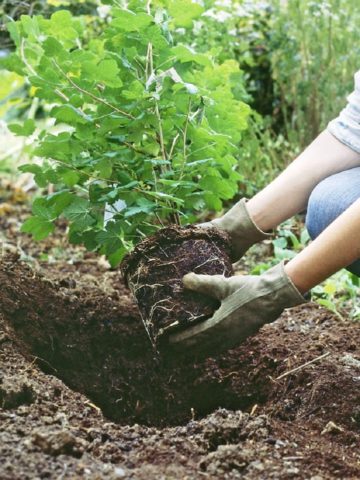
It is not recommended to pour wood ash into the planting hole as fertilizer.
Watering and fertilizing
Hydrangea Bombshell does not tolerate excessive soil moisture, but severe drought also negatively affects the development of the bush. Watering is carried out taking into account the prevailing weather conditions and the condition of the soil; it should not crack or look swampy.
Bombshell hydrangea is fed on average 3-4 times a year. It is recommended to follow this scheme:
- In the spring, organic fertilizers with a high nitrogen content are added to the soil; such subcortex helps the plant gain green mass.
- When the hydrangea begins to form buds, the bush is fed with urea, superphosphate and potassium salt.
- In July, the Bombshell variety is fed with complex mineral fertilizers.
- In autumn, the soil is fertilized with compounds high in phosphorus and potassium.
Bombshell hydrangea pruning
The Bombshell variety is pruned in early spring, even before sap flow begins. In order to stimulate abundant flowering of hydrangea, it is recommended to cut out all weak, broken and dried shoots. Crooked branches are also removed.
The optimal pruning scheme suggests that in the end only 10-12 of the strongest branches should remain. Old inflorescences are cut off to the first strong buds.
Preparing for winter
Adult plants do not need shelter for the winter, but young hydrangea bushes need to be insulated in the fall. To do this, it is enough to hill up the tree trunk circle of seedlings with dry soil and mulch it with a thick layer of fallen leaves. In winter, snow is raked up to the plants, which will serve as additional protection from frost.
Reproduction
The Bombshell variety is most conveniently propagated by cuttings.The whole process looks like this:
- In spring or summer, cuttings are taken from the bush. Each of them must contain at least 2 buds.
- The upper leaves are shortened by half, and the lower end of the cutting is adjusted by cutting it diagonally, so it will be more convenient to bury it in the ground.
- After this, the prepared planting material is dipped in a container of water until the cuttings begin to form roots. They are then moved into wet sand with peat.
- The containers with seedlings are placed in the greenhouse, periodically watered and covered. Next summer, hydrangea can be transplanted into open ground.
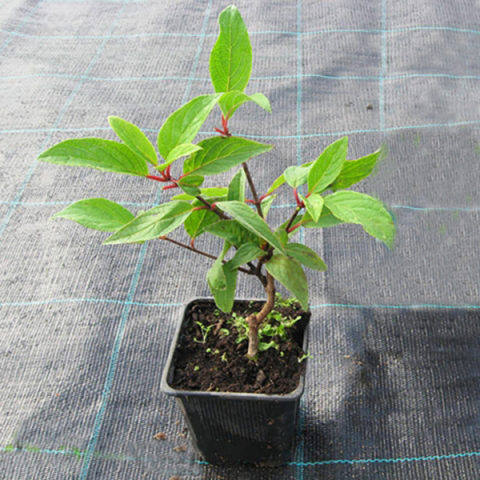
Bombshell hydrangea seedlings must be ventilated at least once a week for about an hour
Diseases and pests
The Bombshell variety gets sick extremely rarely, and this happens mainly due to errors in agricultural technology: excessive watering, lack of fertilizing, inappropriate type of soil for planting, etc. Despite the fact that the shrub is unpretentious, a complete lack of care for it can weaken the plant and make you vulnerable to various diseases:
- Chlorosis. The disease manifests itself as yellowing of leaves, usually caused by a lack of iron in the soil. At the first signs of the disease, a solution of iron sulfate is applied under the hydrangea bushes.
- Powdery mildew. Symptoms of the disease - grayish spots appear on the leaf blades. Hydrangea is treated by spraying the plantings with Fundazol or Bordeaux mixture.
- Gray rot. The first sign of the disease is the formation of brownish spots on the leaves of the hydrangea. Treatment is carried out using treatments with “Pure Flower” or “Skor”.
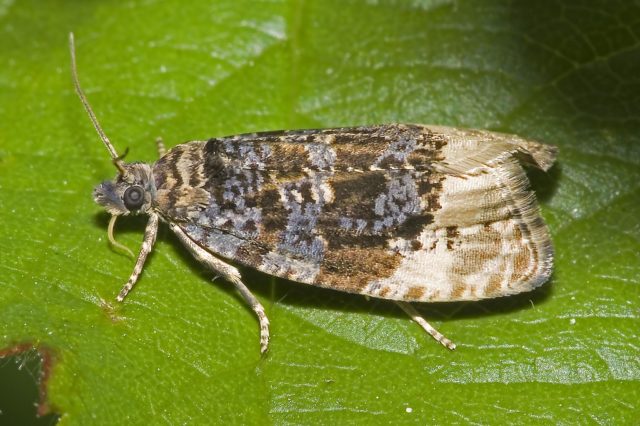
Of the pests, only nematodes, aphids and leaf rollers can pose a serious threat to shrubs, but any industrial insecticide can easily cope with them
Conclusion
Hydrangea Bombshell is one of the most beautiful varieties, characterized by unusually lush and extended flowering. Its excellent winter hardiness allows it to be grown in almost all regions of the country, and the unpretentiousness of the shrub has earned it great popularity. Due to its low maintenance requirements, the Bombshell variety is ideal for beginner gardeners and those who do not have time to care for plants for a long time.
